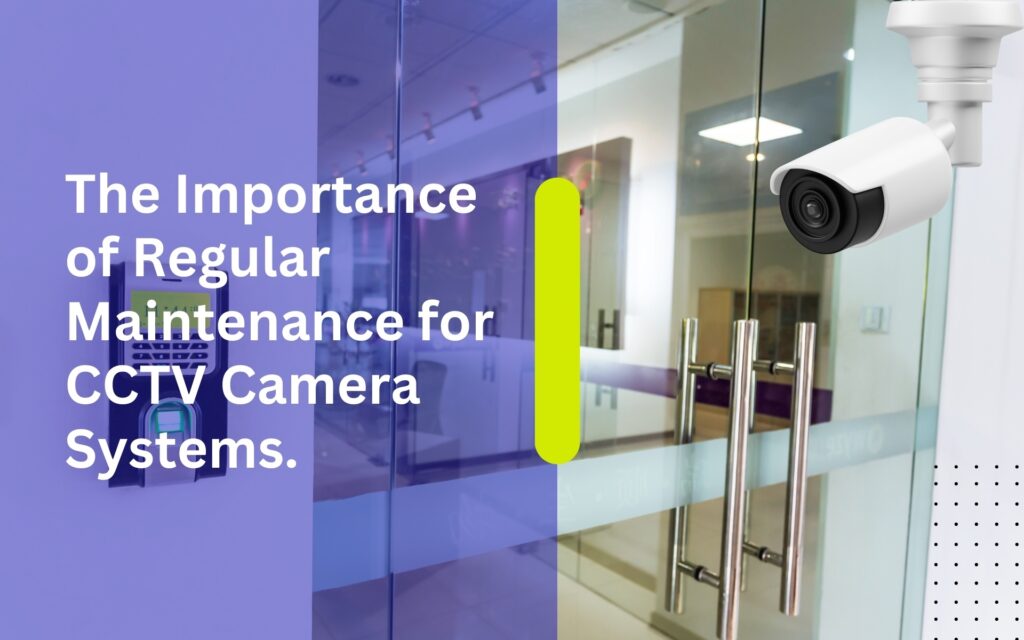SMS BLASTING SYSTEM OVERVIEW. Introduction In today’s fast-paced digital landscape, timely communication has become a crucial factor in maintaining strong relationships with customers, clients, employees, and community members. Businesses across various industries …
Implementing Access Control Systems with CCTV Integration.

Introduction
In today’s rapidly evolving technological landscape, ensuring the safety and security of physical spaces has become paramount for businesses, institutions, and homeowners alike. Access control systems combined with closed-circuit television (CCTV) integration have emerged as a comprehensive solution to monitor, control, and secure premises effectively. This article explores the benefits, implementation strategies, and considerations associated with integrating access control systems with CCTV for enhanced security measures.
Understanding Access Control Systems
Access control systems are designed to regulate entry and exit points within a facility, allowing authorized personnel access while preventing unauthorized individuals from entering restricted areas. These systems employ various authentication methods such as keycards, biometric scans, PIN codes, or mobile credentials to grant or deny access.
Key Components of Access Control Systems:
1. Authentication Devices
Devices such as card readers, biometric scanners, keypads, or mobile applications are used to verify the identity of individuals seeking access.
2. Control Panels
Control panels serve as the central hub of the access control system, processing authentication data and controlling the locking mechanisms of doors or entry points.
3. Locking Mechanisms
Electronic locks, magnetic locks, or door strikes are installed on doors and entry points to control access based on authorization status.
4. Management Software
Intuitive software interfaces enable administrators to manage user permissions, monitor access logs, and configure system settings remotely.
Benefits of Access Control Systems:
1. Enhanced Security
Access control systems mitigate the risk of unauthorized access, theft, or security breaches by restricting entry to authorized personnel only.
2. Increased Accountability
Detailed access logs provide valuable insights into employee or visitor movements, aiding in investigations or audits in the event of security incidents.
3. Flexible Access Management
Administrators can easily modify access permissions, revoke credentials, or grant temporary access to individuals as needed, providing greater flexibility and control.
4. Integration Capabilities
Access control systems can seamlessly integrate with other security technologies such as CCTV cameras, further enhancing surveillance capabilities and overall security posture.
5. Understanding CCTV Integration
Closed-circuit television (CCTV) systems utilize video cameras to capture and record footage of specific areas within a facility for surveillance purposes. Integrating CCTV with access control systems allows for synchronized monitoring and real-time event correlation, enabling proactive security measures.
Key Components of CCTV Systems
1. Cameras
CCTV systems comprise a network of cameras strategically positioned to monitor critical areas, entry points, and perimeters.
2. Digital Video Recorders (DVRs) or Network Video Recorders (NVRs)
These devices record and store video footage captured by CCTV cameras for future review or analysis.
3. Monitoring Stations
Security personnel or administrators can monitor live feeds or review recorded footage from centralized monitoring stations equipped with viewing screens and playback controls.
4. Video Analytics
Advanced CCTV systems may incorporate video analytics software to automatically detect and alert users to suspicious activities or unauthorized access attempts.
Benefits of CCTV Integration
1. Comprehensive Surveillance
Integrating CCTV with access control systems provides a holistic approach to security by combining access control data with video footage, offering a comprehensive view of security events.
2. Real-Time Monitoring
Security personnel can monitor access control events and corresponding video feeds in real-time, enabling immediate response to security incidents or breaches.
3. Forensic Analysis
In the event of a security breach or incident, integrated CCTV footage can be used for forensic analysis, aiding in investigations and identifying perpetrators.
4. Deterrent Effect
Visible CCTV cameras act as a deterrent to potential intruders or unauthorized individuals, reducing the likelihood of security incidents or criminal activities.
Implementation Strategies
1. Conduct a Security Assessment
Begin by conducting a thorough security assessment to identify vulnerabilities, high-risk areas, and security requirements specific to your facility.
2. Define Access Control Policies
Establish clear access control policies outlining who has access to which areas, under what circumstances, and with what level of authorization.
3. Select Compatible Systems
Choose access control and CCTV systems that are compatible with each other, ensuring seamless integration and interoperability.
4. Plan Installation and Configuration
Work with experienced security integrators to plan the installation and configuration of access control and CCTV systems, considering factors such as camera placement, wiring, and network connectivity.
5. Training and Education
Provide comprehensive training to security personnel, administrators, and end-users on the proper use of integrated access control and CCTV systems, including access control protocols, video monitoring procedures, and emergency response protocols.
Considerations and Best Practices
1. Data Privacy and Compliance
Ensure compliance with relevant data privacy regulations and industry standards when collecting, storing, and managing access control and CCTV data.
2. Cybersecurity Measures
Implement robust cybersecurity measures to protect access control and CCTV systems from cyber threats, including encryption, network segmentation, and regular software updates.
3. Regular Maintenance and Monitoring
Establish a schedule for regular maintenance, updates, and testing of integrated access control and CCTV systems to ensure optimal performance and reliability.
4. Continuous Improvement
Continuously evaluate and refine security protocols, access control policies, and surveillance strategies based on evolving threats, technology advancements, and lessons learned from security incidents.
Conclusion
Integrating access control systems with CCTV technology offers a powerful solution for enhancing the security of physical spaces, providing proactive surveillance, real-time monitoring, and comprehensive access control capabilities. By leveraging the synergies between access control and CCTV systems, organizations can bolster their security posture, mitigate risks, and safeguard assets, personnel, and sensitive information effectively in today’s dynamic threat landscape. Embracing integrated security solutions is not only a proactive measure but also a strategic investment in the safety and resilience of your organization.
Related Articles
InstallersPH IT Solutions 2026 AVP: A Brighter Tomorrow Built on Nine Years of Innovation and Dedication. Introduction. As InstallersPH IT Solutions proudly celebrates its ninth year of service in 2026, the company …
How to Properly Conduct CCTV Preventive Maintenance Service (PMS). Introduction. CCTV systems play a crucial role in maintaining safety and security within properties, businesses, and institutions. However, even the most advanced surveillance …

